Hewson Consultants were one of the smaller software companies which produced video games for home computers in the mid-1980s. They had a reputation for high-quality games which continually pushed the boundaries of what the computers were capable of and can be compared favourably with other ground-breaking software houses like Ultimate Play the Game and Beyond. Fourteen of their games were awarded "Megagame" by Your Sinclair.
CDS Software was an independent publisher and developer of computer game software based in Doncaster, South Yorkshire, UK.

Skyfox is a combat flight simulation game developed by Ray Tobey for the Apple II and published by Electronic Arts in 1984. Ariolasoft published the game in Europe. It was released for the ZX Spectrum, Amstrad CPC, Commodore 64, and Macintosh in 1985, to the Amiga and Atari ST in 1986, and to the PC-88 in 1988.

Star Raiders II is a space combat simulator released in 1986 for Atari 8-bit computers as a sequel to 1979's Star Raiders, which was the killer app for the system. The game was originally developed as part of a tie-in with the movie The Last Starfighter, which featured an arcade game of the same name as part of its plotline. Versions for the Atari 5200 and the Atari 8-bit computers were developed in 1984, although those were never released. Later the tie-in was dropped, and the game converted into a sequel to Star Raiders by changing a number of gameplay elements. The gameplay remained different from the original Star Raiders.

Tau Ceti is a video game published in 1985 by CRL for the ZX Spectrum and converted to the Amstrad CPC, Amstrad PCW, Atari ST, Commodore 64, and MS-DOS. It was designed and programmed by Pete Cooke. The world, set on Tau Ceti III orbiting Tau Ceti, is displayed using 3D graphics with shadow effects. The planet has a day and night cycle.
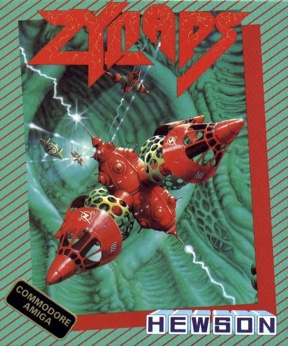
Zynaps is a side-scrolling shoot 'em up video game published by Hewson Consultants for the ZX Spectrum, Amstrad CPC and Commodore 64 in 1987 and for the Atari ST in 1988 and the Amiga.
Steve Turner is a former computer game musician and designer. His development team, Graftgold, mostly wrote for games published by Hewson Consultants during the 1980s.
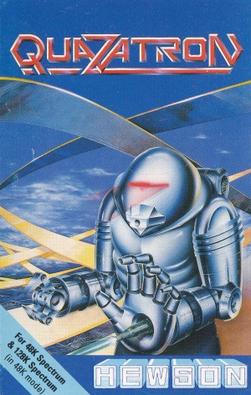
Quazatron is an action game developed by Graftgold, and released in 1986 by Hewson Consultants. It was designed by Steve Turner for the ZX Spectrum.

Starfox is a video game published by Ariolasoft on their Reaktor label in 1987 for the ZX Spectrum, Commodore 64, and Amstrad CPC. The player assumes the role of Hawkins, a space fighter pilot charged with protecting the Hyturian star system from invading alien forces. The game uses wireframe and shaded vector graphics to depict combat, in a similar fashion to games such as Elite and Starstrike 2, which was also created by Realtime Games. Ariolasoft had previously published the Electronic Arts titles Skyfox and Arcticfox and the name was chosen to build on the success of those titles. The US Commodore 64 release was titled The Rubicon Alliance.

ATF: Advanced Tactical Fighter is a video game for the ZX Spectrum, Commodore 64, and Amstrad CPC in 1988 by Digital Integration. The player takes control of Lockheed's YF-22A Advanced Tactical Fighter in a fictional war between two rival factions. The world is a collection of islands randomly generated for each game. The fighter can be armed with a combination of cannon rounds, ASRAAM missiles, and Maverick missiles for destroying ground targets, even those out of visual range.
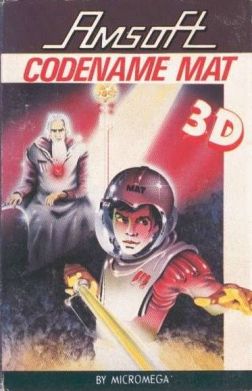
Codename MAT is a space combat simulator published in 1984 by Micromega for the ZX Spectrum and Amstrad CPC written by Derek Brewster. The game is similar to Atari, Inc.'s Star Raiders from 1979. Both games allow switching between front and aft-facing views and have strategic chart and scan modes. While Star Raiders has the player fighting Zylons, in Codename MAT the enemies are Myons.
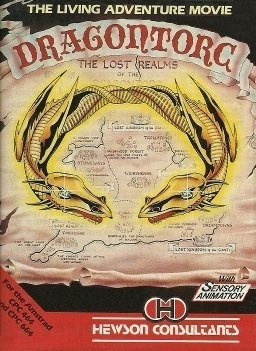
Dragontorc is an action-adventure game developed by Steve Turner's Graftgold and released for the Amstrad CPC and ZX Spectrum by Hewson Consultants in 1985. It is a sequel to 1984's Avalon The 3D Adventure Movie. The hero of Avalon, Maroc the Mage, returns to defeat an evil witch and save Britain. The game was well received by critics.
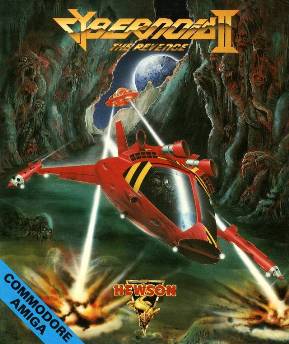
Cybernoid II: The Revenge is a shoot 'em up released by Hewson Consultants in 1988 for the Amstrad CPC, Commodore 64, and ZX Spectrum home computers. It was later ported to the Atari ST and Amiga. It is the sequel to Cybernoid.

Avalon is an action-adventure game written by Steve Turner for the ZX Spectrum and published by Hewson Consultants in 1984. Avalon was followed by a sequel in 1985, Dragontorc.

3D Space Wars is a space combat video game written by Steve Turner for the ZX Spectrum and published by Hewson Consultants in 1983. It is both the first game written by Turner and the first in the Seiddab Trilogy.
Dark Star is a 1984 ZX Spectrum shoot 'em up developed and published by Design Design. It was later ported to other home computer platforms including the Amstrad CPC, TRS-80 Color Computer, and Dragon 32/64 in 1985.
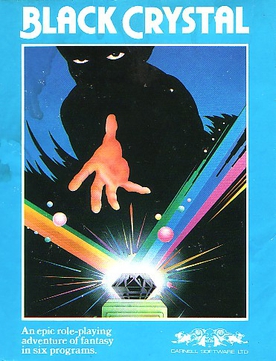
Black Crystal is an action-adventure game released in 1982 for the ZX81, ZX Spectrum, Commodore 64 and TI-99/4A computers by Carnell Software Ltd. It was the first in the "Third Continent Trilogy" of adventure games; followed by Volcanic Dungeon and The Wrath of Magra.

Quest Adventure is an adventure video game written by Kim Topley for the ZX Spectrum and published by Hewson Consultants in 1983.
3D Tank Duel is a video game developed by Realtime Games Software for the ZX Spectrum home computer. It is a clone of the arcade game Battlezone, featuring wireframe 3D graphics with color.
Combat Lynx is a real-time combat flight simulation game developed by Durell Software and released in 1984 for the Commodore 64 and ZX Spectrum, with versions for the Amstrad CPC, BBC Micro, and Electron following in 1985. The game puts players in control of a Westland Lynx helicopter, tasking them with defending bases and troops while destroying enemy forces. Durell Software Ltd. developed Combat Lynx with assistance from Westland Helicopters, the manufacturers of the real Lynx helicopter.














